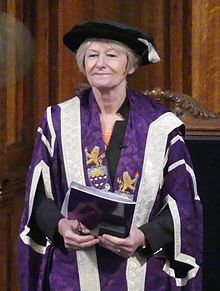
Manchester Metropolitan University (MMU) is located in the centre of Manchester, England. The university has over 40,000 students and over 4,000 members of staff. It is home to four faculties and is one of the largest universities in the UK, measured by the size of its student population in 2020/21.

The University of Manchester is a public research university in Manchester, England. The main campus is south of Manchester City Centre on Oxford Road. The university owns and operates major cultural assets such as the Manchester Museum, The Whitworth art gallery, the John Rylands Library, the Tabley House Collection and the Jodrell Bank Observatory – a UNESCO World Heritage Site. The University of Manchester is considered a red brick university, a product of the civic university movement of the late 19th century. The current University of Manchester was formed in 2004 following the merger of the University of Manchester Institute of Science and Technology (UMIST) and the Victoria University of Manchester. This followed a century of the two institutions working closely with one another.

The University of Bath is a public research university in Bath, England. It received its royal charter in 1966, along with a number of other institutions following the Robbins Report. Like the University of Bristol and University of the West of England, Bath can trace its roots to the Merchant Venturers' Technical College, established in Bristol as a school in 1595 by the Society of Merchant Venturers. The university's main campus is located on Claverton Down, a site overlooking the UNESCO World Heritage city of Bath, and was purpose-built, constructed from 1964 in the modernist style of the times.

Brunel University London is a public research university located in the Uxbridge area of London, England. It was founded in 1966 and named after Isambard Kingdom Brunel, a Victorian engineer and pioneer of the Industrial Revolution. In June 1966, Brunel College of Advanced Technology was awarded a royal charter and became Brunel University; in 2014 the university formally adopted the name Brunel University London (BUL). The university is considered a British plate glass university. In October 2024, Brunel will join the federal University of London to become the federation's 18th member.

The University of Leeds is a public research university in Leeds, West Yorkshire, England. It was established in 1874 as the Yorkshire College of Science. In 1884 it merged with the Leeds School of Medicine and was renamed Yorkshire College. It became part of the federal Victoria University in 1887, joining Owens College and University College Liverpool. In 1904 a royal charter was granted to the University of Leeds by King Edward VII.
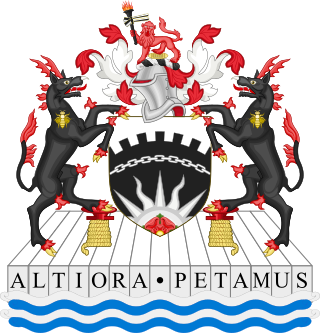
The University of Salford is a public research university in Salford, Greater Manchester, England, 1 mile west of Manchester city centre. The Royal Technical Institute, Salford, which opened in 1896, became a College of Advanced Technology in 1956 and gained university status in 1967, following the Robbins Report into higher education.
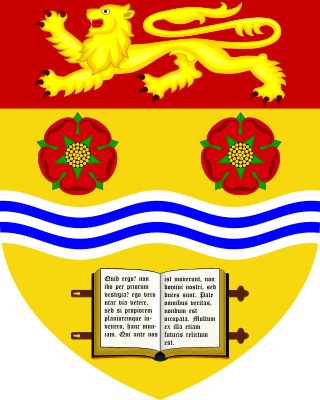
Lancaster University is a public research university in Lancaster, Lancashire, England. The university was established in 1964 by royal charter, as one of several new universities created in the 1960s.
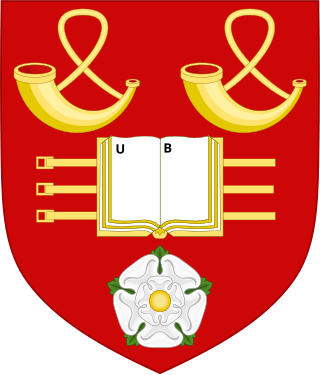
The University of Bradford is a public research university located in the city of Bradford, West Yorkshire, England. A plate glass university, it received its royal charter in 1966, making it the 40th university to be created in Britain, but can trace its origins back to the establishment of the industrial West Yorkshire town's Mechanics Institute in 1832.

Oxford Brookes University is a public university in Oxford, England. It is a new university, having received university status through the Further and Higher Education Act 1992. The university was named after its first principal, John Henry Brookes, who played a major role in the development of the institution.

The University of Wolverhampton is a public university in Wolverhampton, England, located on four campuses across the West Midlands, Shropshire and Staffordshire. Originally founded in 1827 as the Wolverhampton Tradesmen's and Mechanics' Institute, the university was subject to a series of merges, incorporations, and expansions with other local colleges, one of which occurred under the supervision of Prince George, Duke of Kent.

The University of Bolton, Bolton University or UoB is a public university in Bolton, Greater Manchester, England. The University is commonly referred to as a 'post-92' institution, which is a reference to the Further and Higher Education Act 1992. It has approximately 11,000 students and more than 900 academic and professional staff.

Dame Nancy Jane Rothwell is a British physiologist. She served as president and vice-chancellor of the University of Manchester from 2010 to 2024, having deputised in both roles until January 2010.
Building Design Partnership Ltd, doing business as BDP, is a firm of architects and engineers employing over 900 staff in the United Kingdom and internationally.
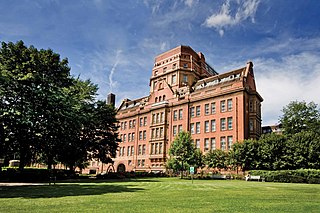
The Department of Materials, at the University of Manchester is an academic and research department specialising in Materials Science and Engineering and Fashion Business and Technology. It is the largest materials science and engineering department in Europe. This is reflected by an annual research income of around £7m, 60 academic staff, and a population of 150 research students and 60 postdoctoral research staff. The Department of Materials was formerly known as the School of Materials until a faculty-wide restructuring in 2019.

The Sackville Street Building is a building on Sackville Street in Manchester, England. The University of Manchester occupies the building which, before the merger with UMIST in 2004, was UMIST's "Main Building". Construction of the building for the Manchester School of Technology began in 1895 on a site formerly occupied by Sir Joseph Whitworth's engineering works; it was opened in 1902 by the then Prime Minister, Arthur Balfour. The School of Technology became the Manchester Municipal College of Technology in 1918.
The Women of Outstanding Achievement Photographic Exhibition was an annual event organised by the UKRC between 2006 and 2012, when it was subsumed into the WISE Campaign awards. It comprised creative photographs of outstanding women within science, engineering and technology (SET). Between four and seven women were chosen each year to be photographed by Robert Taylor. Nominations occurred in the Autumn of each year and the recipients were announced at a ceremony in March of the following year.

The Mancunion is the University of Manchester Students' Union's student newspaper. It is the largest student newspaper in the United Kingdom and is distributed throughout Greater Manchester. The name is a portmanteau of Mancunian, the demonym for residents of Manchester, and union, given its role as the newspaper of the Students' Union. Past writers include film critics Mark Kermode.
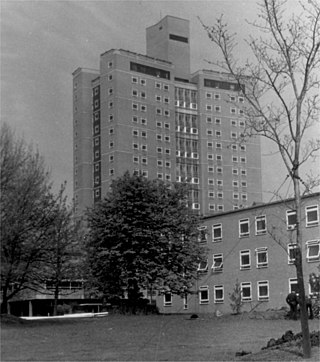
The Fallowfield Campus is the main residential campus of the University of Manchester. It is located in Fallowfield, Manchester, 2 miles (3 km) south of the main university site, to which it is connected by Wilmslow Road and the A34.

The 2020 University of Manchester protests were a series of student protests and rent strikes at the University of Manchester in England. The protests began on 5 November 2020, and occupations ended on 25 November 2020. The protest was in reaction to perceived mishandling of the response to the COVID-19 pandemic by university management. The goals of the protests were a removal of fencing erected during the COVID-19 lockdown and a reduction in rents in halls of residence. This later expanded to goals including improvement of living conditions, increased access to support services and the removal of senior university leadership figures, such as Vice-chancellor Nancy Rothwell.
Duncan Mackenzie Ivison is a Professor of political philosophy and Vice Chancellor of the University of Manchester. He has served as VC since August 2024 when he succeeded Nancy Rothwell and formerly served as Deputy Vice Chancellor at the University of Sydney and head of the School of Humanities.


